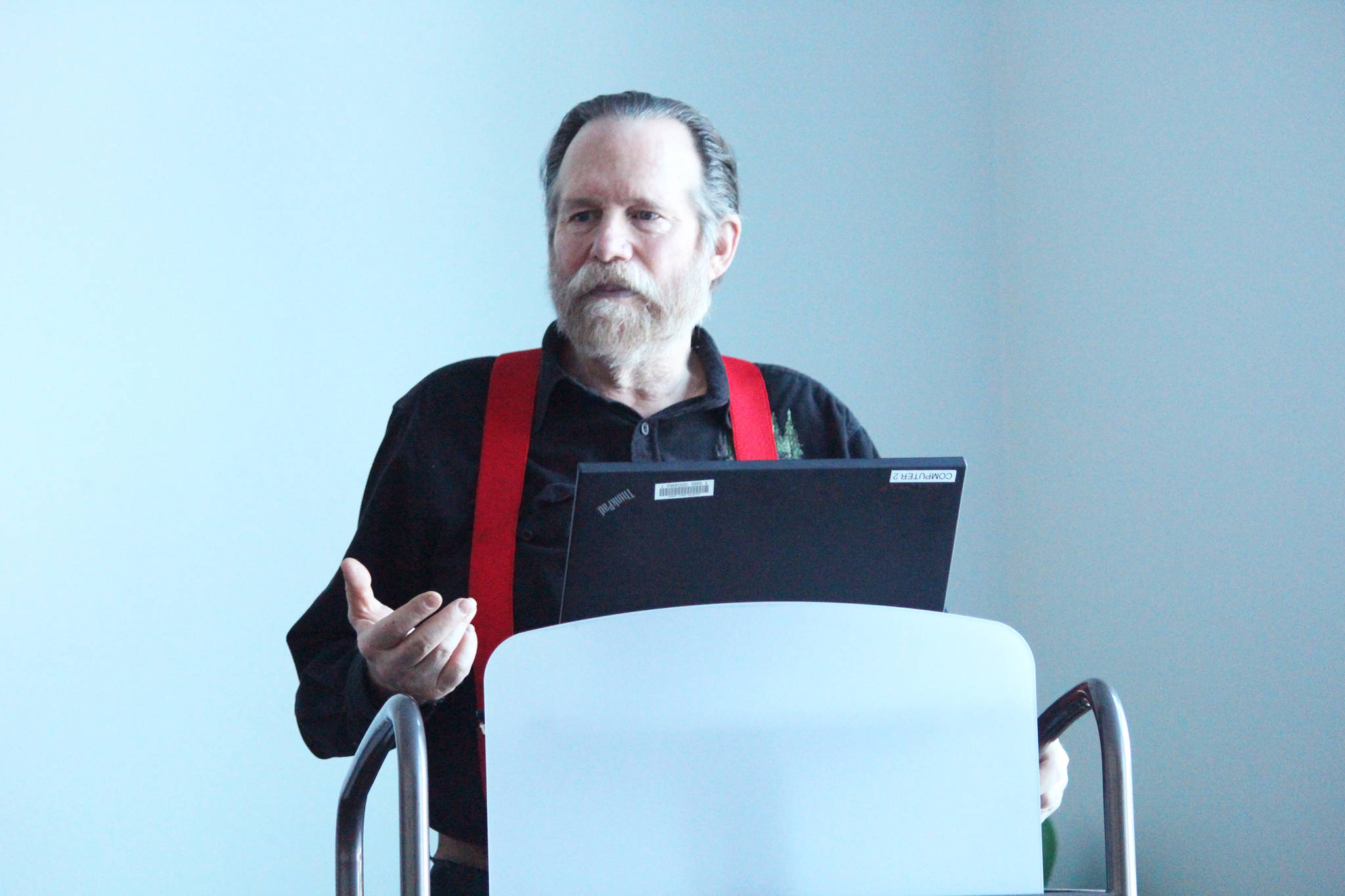Ever wonder what a grizzly is thinking when it wanders into a back yard, or comes face to face with a hiker somewhere in Alaska’s expansive backcountry?
Local biologist Stephen Stringham is likely the man with the most accurate answer.
The small group of people gathered to hear Stringham speak at Soldotna’s Joyce K. Carver Memorial Library on Saturday got the added treat of a more personal presentation. They swapped stories of their own experience with bears and of various encounters before he got down to the dos and don’ts of handling encounters with the animals.
Stringham estimates he’s had around 10,000 encounters with bears in his life, he said during his presentation. While that may seem like an outrageous number, it’s not out of the question for someone who has been studying bears since 1969.
There are several common misconceptions people have regarding both brown and black bears that make interacting with them more difficult, Stringham said, one of them being that if a bear comes near a human in the wild, it wants to eat that human. More often than not, Stringham said bears are simply going about their daily routines when they come across people.
There are generally three types of behaviors a bear will exhibit toward a person during an encounter, Stringham said: protectiveness, rivalry and predation. This first is the most common, and happens because bears perceive humans as threats and want to protect themselves or their cubs.
When people encounter bears, they tend not to differentiate between the three behaviors, Stringham said. Some try to intimidate the bear by waving their arms, others might make loud noises and still others might try to shoot the animal. There are several pieces of bear advice that haven’t proven very effective but that people still practice because they don’t know otherwise, he said.
“So people go out in the woods and do everything that they’re told, like yell, ‘Hey bear! Hey bear!’” Stringham said. “I’ll tell you, first of all, bears don’t speak English.”
He went on to explain that making a bear aware of one’s presence that way can come off sounding aggressive, and the main cause of bear attacks tends to be that they are defending themselves. Instead, Stringham suggests making a less threatening noise while out hiking or camping, one that’s more sing-song in nature and less abrasive.
Ideally, people should simply leave the area if they find themselves close to a bear, Stringham said. They shouldn’t run, because that invites the animal to chase. They shouldn’t try to intimidate because, again, that is likely to scare a bear and make it more likely to want to defend itself, he said.
Rather, Stringham said the best way to get out of harm’s way is to take sideways steps slowly away from a bear, so that one is able to keep an eye on both the path and the animal at the same time. Stringham suggests keeping at least 50 feet between oneself and a bear at all times.
“What you do is you do not behave like an enemy,” he said. “You don’t yell at the bear, you don’t run toward it.”
If a bear is displaying behavior that suggests it’s treating a human as a rival, that’s usually because the person has something or is near something the bear wants, Stringham said. This ranges from a good fishing spot to an animal carcass. In these cases, it’s best to sacrifice what the bear wants and move away from the area, he said.
Very rarely, a bear will behave as a predator toward a human, Stringham said. In these cases, escape is the best thing to shoot for, rather than trying to appease the bear, he said.
Shooting a bear should always be the last resort, Stringham said, if for no other reason than that it’s extremely difficult to shoot a moving bear effectively enough to kill it. People who shoot bears during encounters are just about as likely to be mauled as people who don’t, Stringham said.
Carrying bear spray tends to be more effective, he said. Stringham suggests carrying more than one can, so that a person will still have protection if they have to use one.
“You can learn how to use pepper spray — it’s very effective,” he said. “But it isn’t brains in a can, so you have to learn the circumstances. What distance is the bear at, what the wind’s doing.”
Bears give off several visual and audible signals that can let people know they’re scared or distressed. Stringham said these include jaw chomping, swatting trees or the ground, charging, woofing and huffing, popping their lips, moaning or growling. These signs that a bear is afraid show that a person still has something to work with during an encounter, he said.
Close calls with bears can be made easier and less intense by stopping, whenever possible, and taking a moment to try and figure out what the bear is doing or feeling, Stringham said. Tailoring a reaction to what the bear is feeling can mean the difference between a peaceful encounter and a dangerous one.
Reach Megan Pacer at megan.pacer@peninsulaclarion.com.

